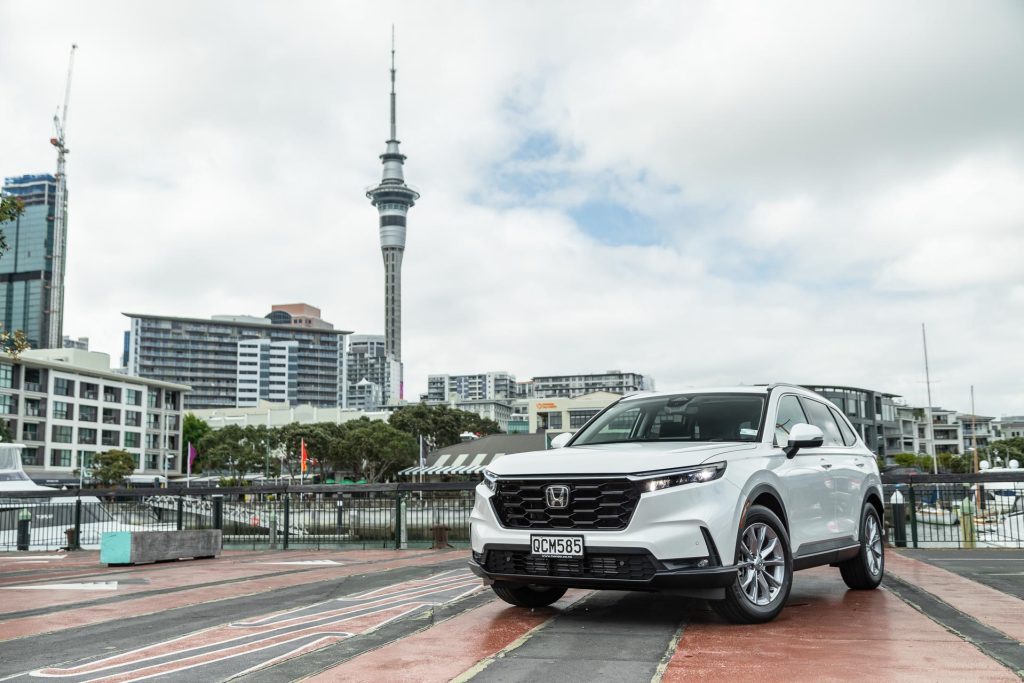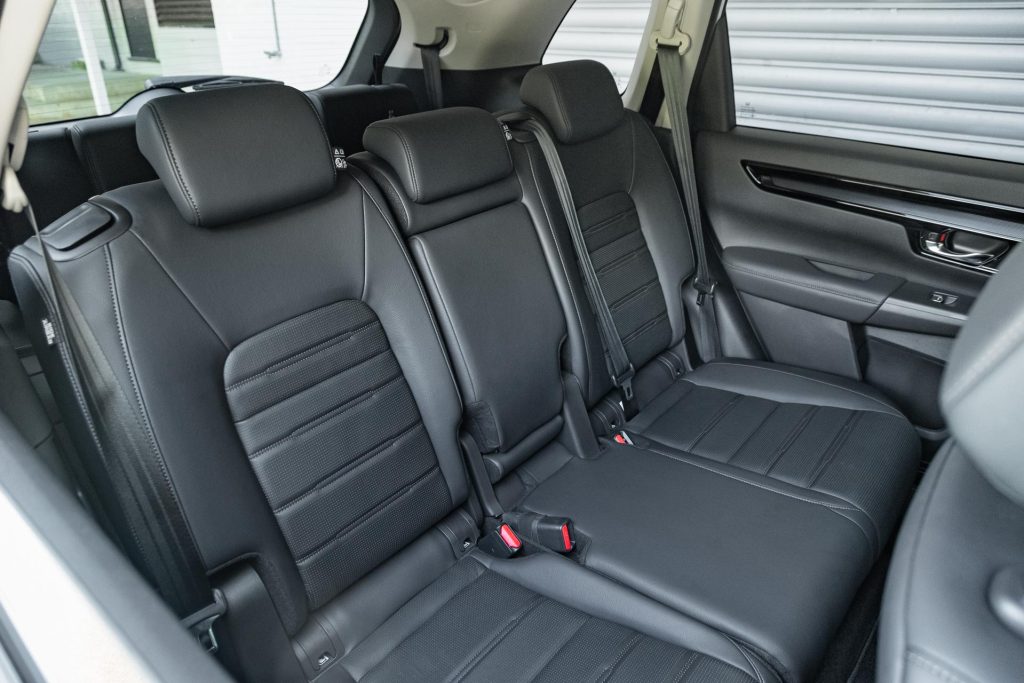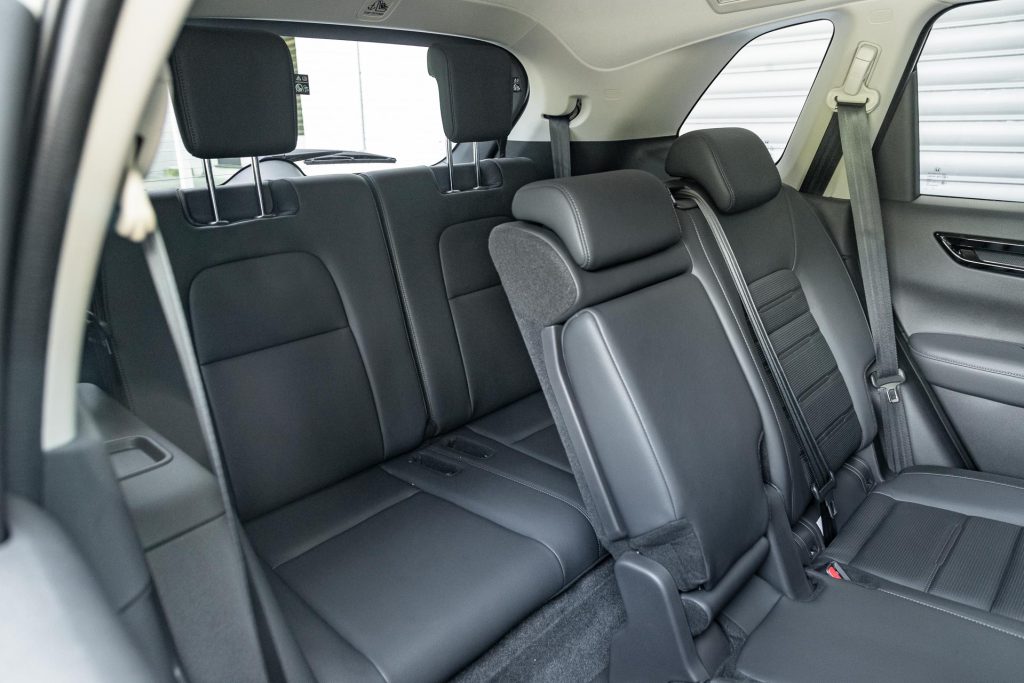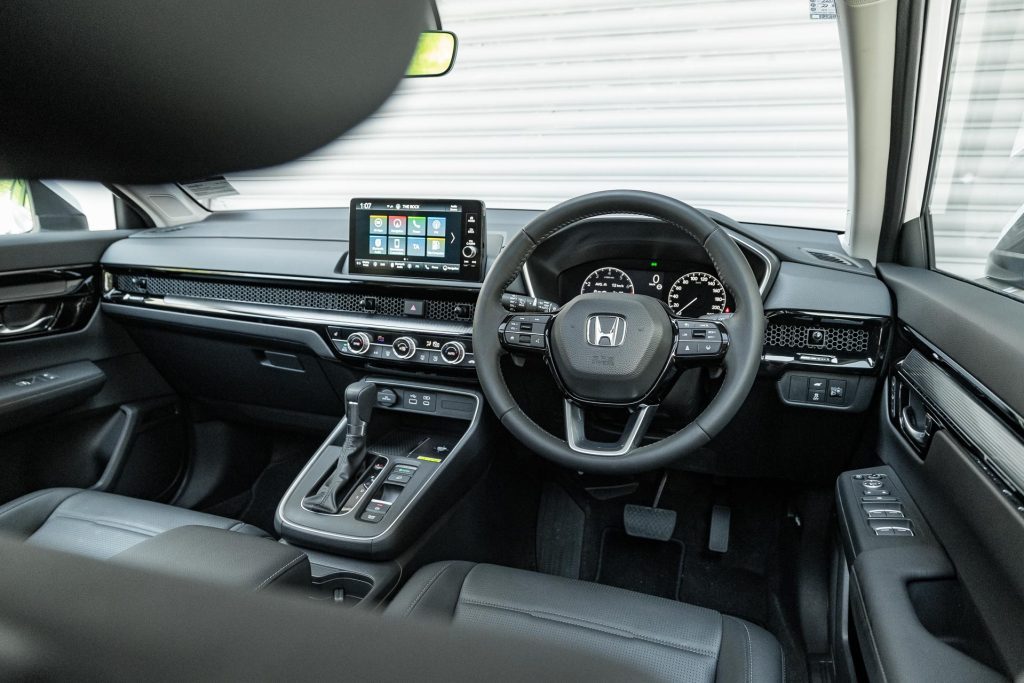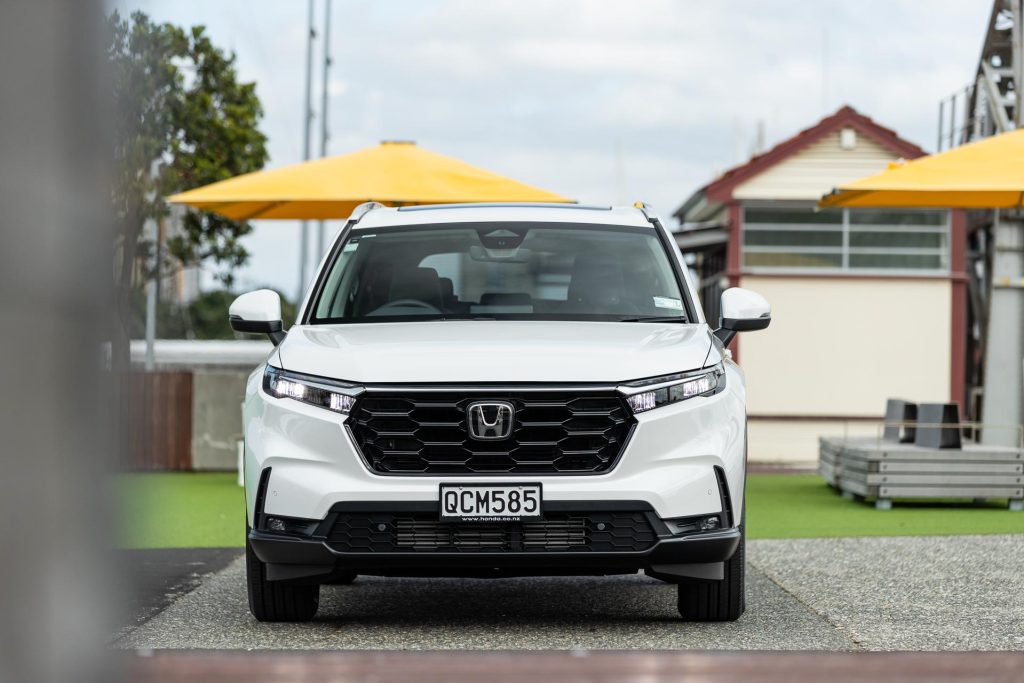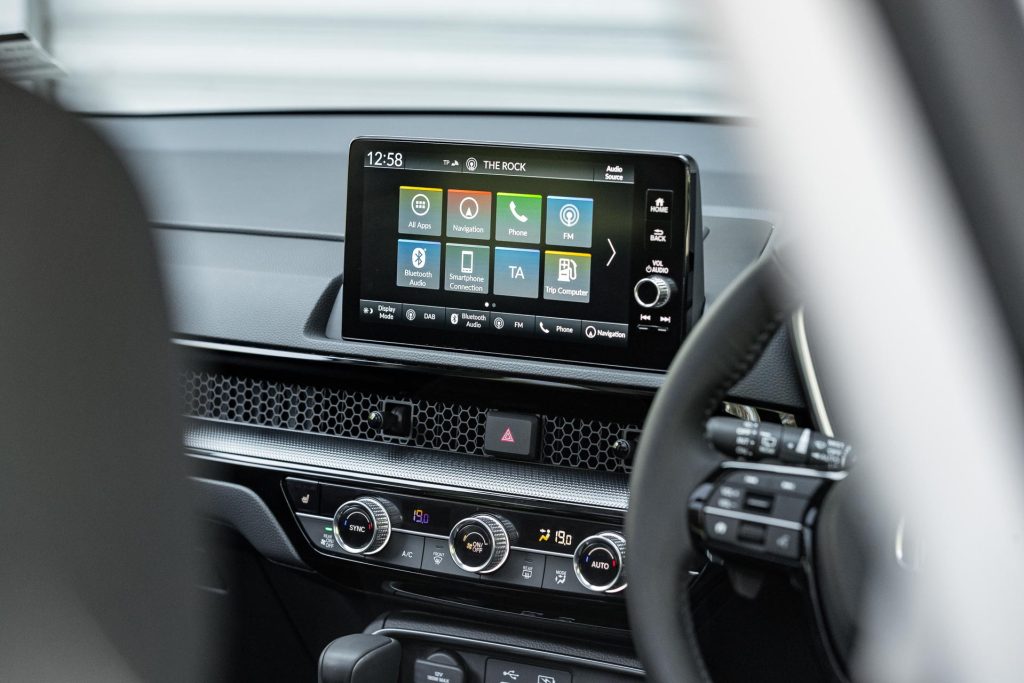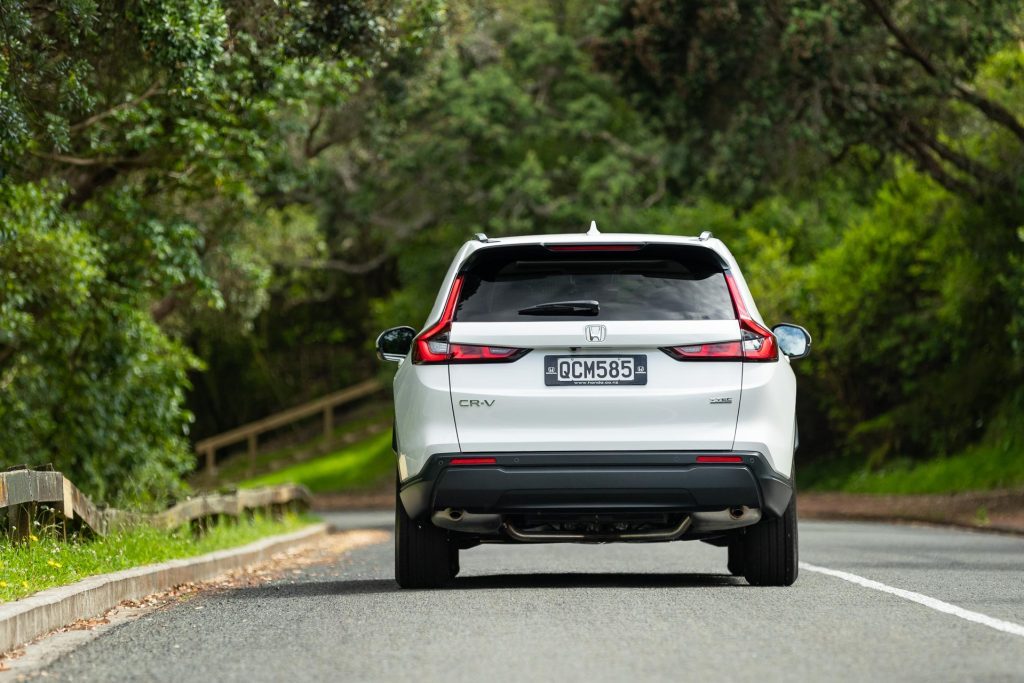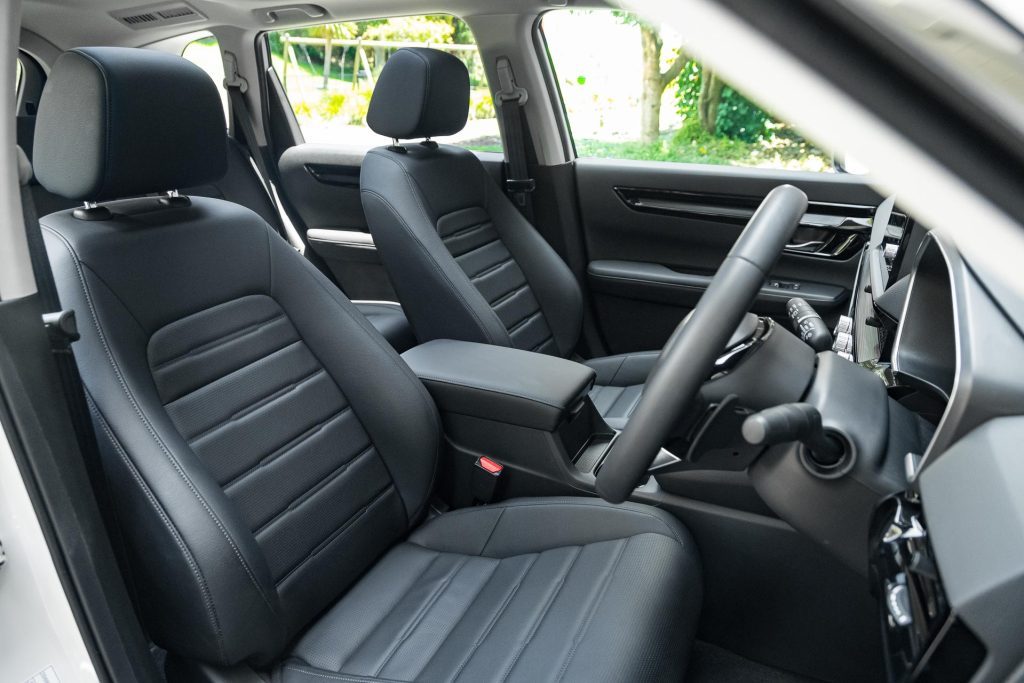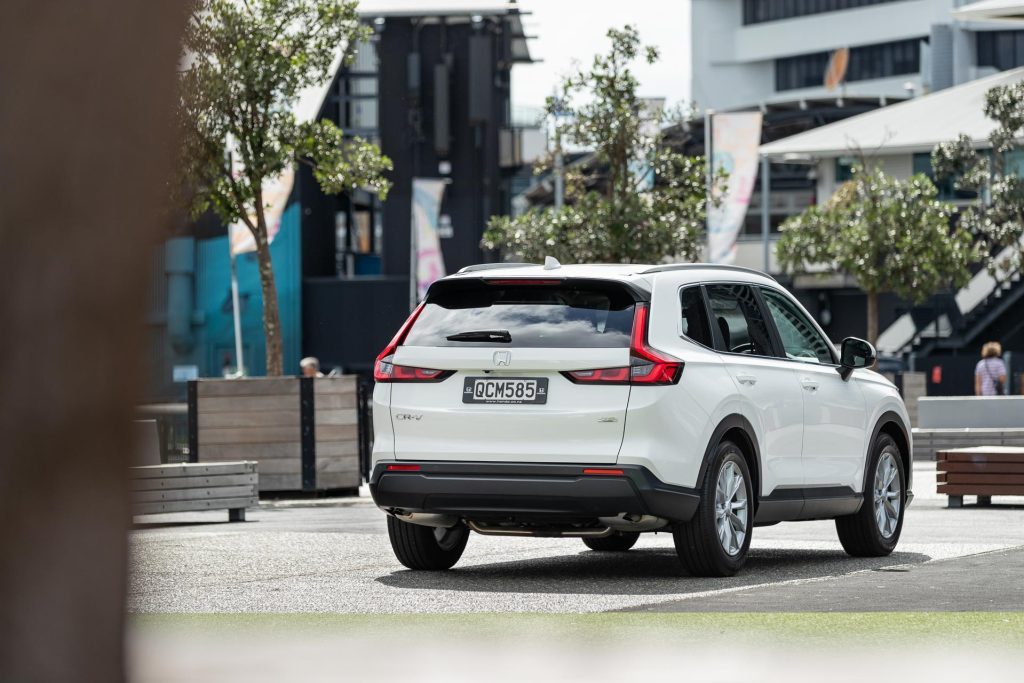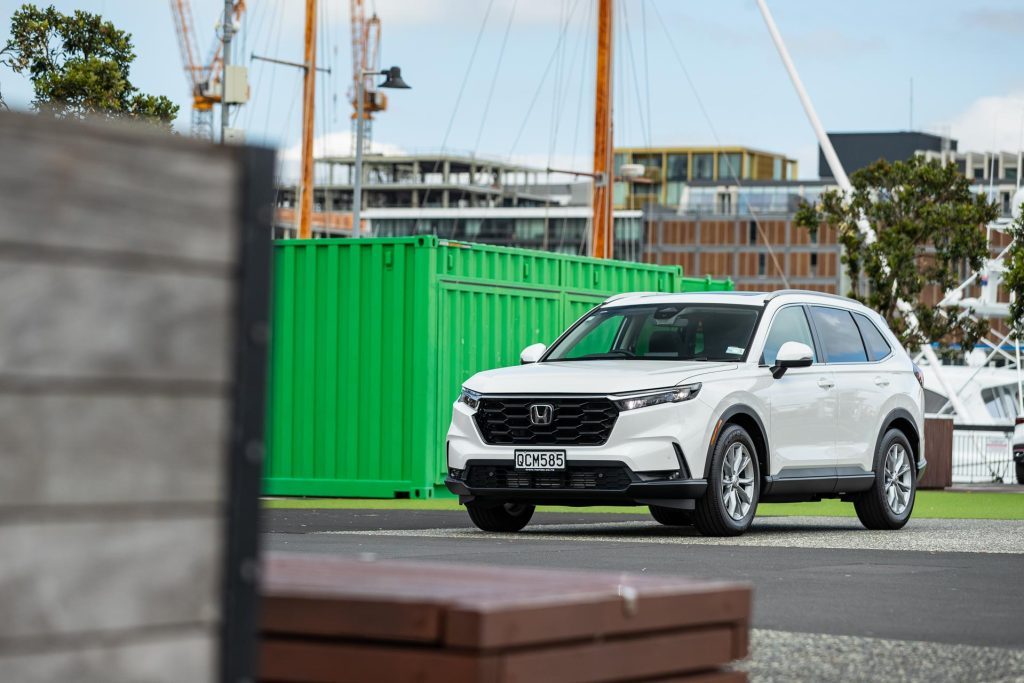2023 Honda CR-V Sport 7 review
Medium SUVs have lifted in quality and specification, as evidenced by the latest Honda CR-V Sport 7.

Medium SUVs are no longer quite as affordable as they once were but quality and specification have lifted, as evidenced by the latest Honda CR-V Sport 7.
Once you’ve hit the sixth generation, you should be hitting your stride and in the latest CR-V the Japanese powerhouse really has.
You can buy a hybrid if you want, but you’re paying $67k for the five seater Honda CRV whereas the $10k cheaper CR-V Sport 7 you see here gives you a third row, as the name suggests. Moreover, it sips fuel politely and runs on 91, despite having a turbocharged engine.
The seven-seat mechanism is clever. It had me foxed initially but after I’d found the ‘missing’ lever it all became clear.
Activate the hands-free powered tailgate and the third-row seat backs pop up when you haul on the tethers.
You (or the kids) access the occasional seats from the middle row; simply pull on the lever at the top of the seat and the entire unit slides and lifts forward for ease of entry.
Once the kids are aboard, just push the seat back into place. If there’s insufficient leg room back there, activating a hidden lever down low up front allows the pew to slide forward.
If the third-row seats aren’t in use, you can slide the middle row seats right back and two adults and a kid can occupy those pews, with masses of legroom.
There’s scarcely a bump for the middle seat occupant to straddle, though they won’t want to be too tall as the panoramic sunroof low point impinges on headroom slightly. A couple of USB-C charge points back there keeps everyone busy with their devices.
Naturally the occasional seats impinge on luggage capacity, the floor being stepped. However, a board at the rear can be raised up and that creates a flat load space after split folding.
While there’s only 150L with all seats in use, after full split folding we managed to get our ebike in the back no problem, having removed the front wheel.
Easy peasy
At the pointy end of the cabin, this couldn’t be more conventional. It is almost the entire opposite of how modern EVs are laid out, although there’s a central touchscreen but it isn’t all important, at least not for driving.
If you want to disable any of the driver assistance functions, that’s all done in the info screen directly ahead, using a button and a scroll wheel on the left side of the tiller.
You’ll want to turn off the road departure mitigation (RDM) system which seems to activate somewhat randomly.
All the HVAC stuff is separate from the touchscreen and there are three large rotary dials for operating fan, temp, direction of air etc. Across the middle of the dash is blackened honeycomb mesh, out of which the air flows from hidden vents.
The direction is easily changed by manipulating toggle-like levers. Even adding favourite radio stations is a snip. They’ve thought this through well and have perfected it over time.
Bigger bear
The sixth-gen CR-V is quite a step up physically since the previous generation of CR-V, being over 100mm longer, and it also rides on a brand new platform, stiffer than before, and with wider tracks.
The front end is a bit more upright and out there, with a larger grille while the glasshouse is enormous, giving a stunning outlook for occupants, the driver especially. The A pillars have been pulled back and they’re now more slimline than ever.
Even looking upward there’s a big chunk of glass there too with an electric blind if it becomes all too much in a summer heatwave. The view through the fifth door glass is stunning. Helping with parking duties are sensors at both ends.
Turn on the dual zone AC and it’s chilled in a minute, the blower not too noisy even on the second and third settings.
Build quality feels top notch too, the heavy doors shutting in chunky style, and no extraneous noises are apparent. Roar from the tyres is well contained, the cabin SPL figures never exceeding 72dB.
So all good on the practical front, apart perhaps from when all seven seats are in use, but once you lose those there’s 840-1457L available, depending on whether you load to the windowline or roofline.
Goes okay
The drive itself is good too. This has relatively modest output of 140kW and 240Nm but thanks to its turbo assistance and continuously variable trans, it gets along just fine.
That’s on account of peak torque being available from 1700-5000rpm so the CVT doesn’t have the engine forever blaring away. There are no drive modes, apart from an Econ setting which takes the edge off slightly, so we didn’t bother with that, especially because fuel use was in the sevens most of the time (quoted average of 8.1L/100km WLTP).
On cruise control at 100 on the motorway we sometimes saw figures in the fives and sixes.
Performance is perfectly adequate; the sprint time of 9.6sec is hardly outrageous but we never felt hard done by, and if you need a squirt for overtaking just select the S transmission setting which has the engine revs rise from 1800 at 100km/h to around 3000rpm.
A passing manoeuvre will take a bit over six seconds or 175m. And if you have second thoughts, the brakes are polished, the pedal honed.
Sweet to helm
Ride and handling are sorted too. Push it some on noteworthy roads and it just rounds up into the corners without a fuss, the steering calm and accurate, grip assured.
It also has amplitude-reactive dampers so the ride is polished, especially at open road speeds. Go for the AWD Sport model if you’ve a definite need for added traction and don’t require seven seats or a glass roof. It also has more towing ability at 1500kg braked versus 1000 for the Sport 7.
And it is less expensive ($53k) than the front-driver. There’s more luggage space too (589-1671L). The AWD system seems to have next to no effect on fuel use (8.2 vs 8.1L/100km) because of its on-demand nature.
That said, if you really need those extra seats there’s little wrong with the Sport 7. The six generations of refinement help.
As to safety systems, they both get the same amount of gear. That includes three child tether points, 11 airbags, AEB, lane warning and departure systems, adaptive cruise, and traffic sign recognition.
Other items run to walk-away locking, nav, smartphone integration, wireless charger, washers integrated into the wipers, and two driver seat memories. There’s nothing much in the way of AI assistance and no idle stop system, neither missed.
If you’re shopping in this space, the CR-V remains one of the best buys. There’s a good price spread, the quality is there and having the front drive and AWD options help with decision making.
Plus the warranty extends up to five years with no mileage limitations.
Model
Honda CR-V Sport 7
Price
$57,000
Engine
1497cc / IL4 / T / DI
Power
140kW@6000rpm
Torque
249Nm@1700-5000rpm
Drivetrain
CVT / FWD
Fuel Use
8.1L/100km
C02 Output
187g/km
0-100km/h
9.59sec
80-120km/h
6.26sec (175.3m)
100-0km/h
35.61m
Stability systems
ABS, ESP, TV
Safety
AEB, ACC, BSM, LDW,
RCTA, ALK, AHB
Luggage Capacity
150-850-1457L
Tow rating
600kg (1000kg braked)
Fuel Capacity
57L
Turning Circle
12m (2.4 turns)
Warranty
5 years / unlimited km
ANCAP rating
Not rated
Weight
1700kg (claimed)
View listings on Trade Me Motors: Honda CR-V
Also consider
